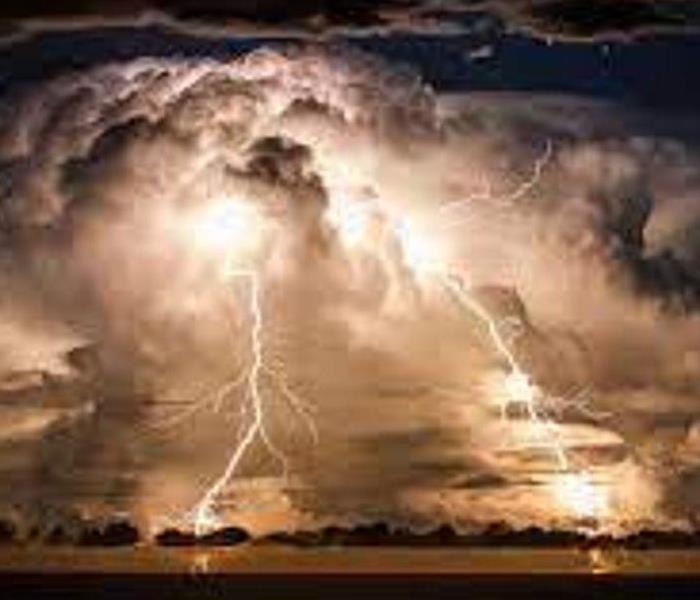Stay Safe In A Severe Thunderstorm
4/6/2021 (Permalink)
Watch The Weather Forecast
- Know the difference between a thunderstorm watch and a thunderstorm warning. A watch simply means conditions could lead to the development of a storm. A warning means a thunderstorm has already developed and been spotted nearby.
- If you’ve just moved and are new to an area, learn the name of your county and surrounding ones, as well as cities and landmarks close by. The National Weather Service usually issues thunderstorm warnings by county, so this will help you understand if your home or workplace is in danger.
- Get a battery-powered or hand-crank weather radio, so you can receive updates even if the power goes out.
Prep Your Home Before A Thunderstorm
- With the spring thunderstorm season approaching, now’s a good time to go out and cut down any loose or rotting branches that could fall on your home during a strong wind.
- If a thunderstorm is headed your way, bring in any outdoor furniture that could be blown around or damaged by hail, close and shutter windows (or close blinds and drapes), and unplug appliances and computers to protect them from power surges that could be caused by lightning.
- Charge all phone and electronic devices ahead of the thunderstorm in case the power goes out. Move computers and electronic devices off of the floor to avoid water damage if it floods.
- Turn off circuit breakers to avoid power surges.
- If you plan to use a portable generator, make sure it’s installed by a qualified electrician. NEVER operate a portable generator inside your home or garage.
- Bring pets inside if you can
During The Thunderstorm
- Go inside and stay there, away from windows and doors. Avoid using corded phones (wireless handheld devices are ok, says the National Weather Service) and doing the dishes or laundry, since lightning can travel through metal plumbing fixtures.
- In severe thunderstorms with high winds or a tornado risk, head to a windowless interior room or the basement, but don’t lean against concrete walls or lie on concrete floors. Most are reinforced by metal bars or webbing, notes the CDC, and lightning could travel through the metal and injure you.
After The Thunderstorm
- Stay inside at least 30 minutes after you last hear thunder to be sure the storm has passed.
- Heavy rains during thunderstorms can flood low-lying areas, so don’t drive over flooded roadways or through puddles when you aren’t sure of their depth.
- Watch out for downed power lines, fallen branches, and other potentially dangerous debris, and keep pets on a leash to help them avoid these hazards, too. Never touch a person or object (fences, tree limbs, water, etc.) that has come into contact (directly or indirectly) with a downed power line, but call 911 immediately.
- Have a qualified electrician inspect any water-damaged electrical equipment, systems, or electronics.
- Do not touch a circuit breaker or replace a fuse with wet hands or while standing on a wet surface.
- If you smell gas, notify emergency authorities immediately. Do not turn on lights, light matches, use electrical equipment, or do anything that has the potential to create a spark.





 24/7 Emergency Service
24/7 Emergency Service
